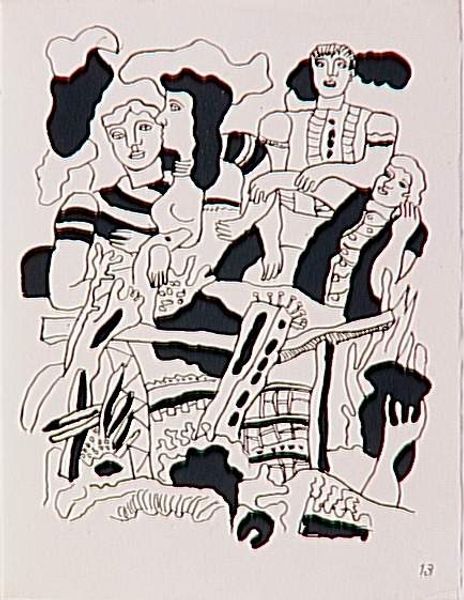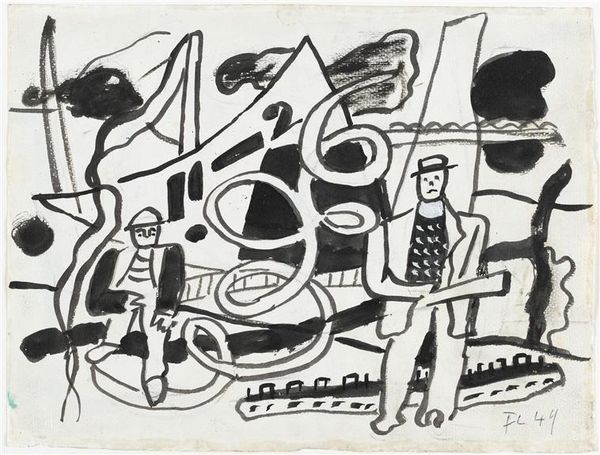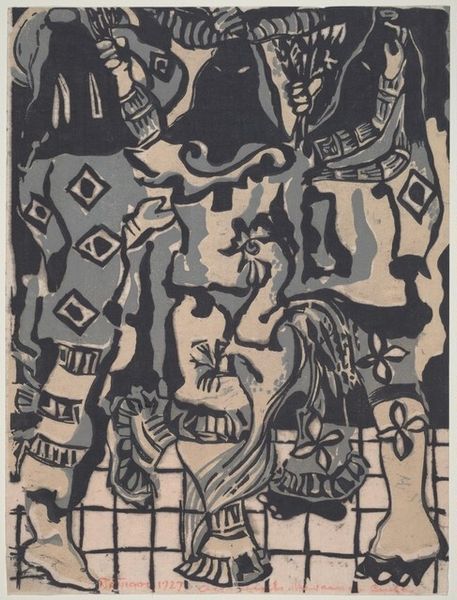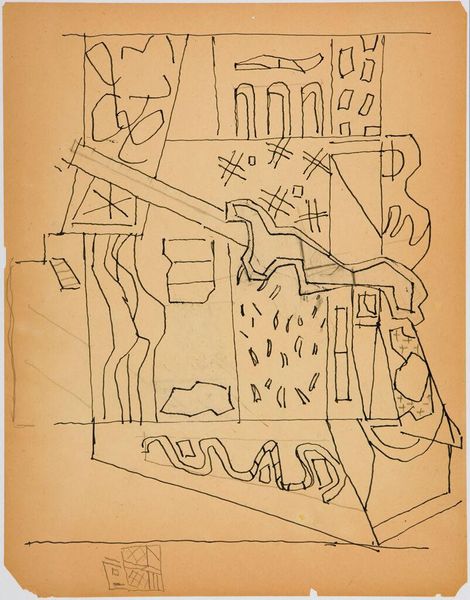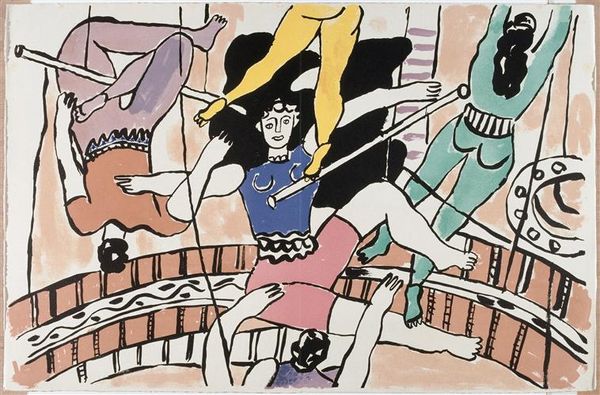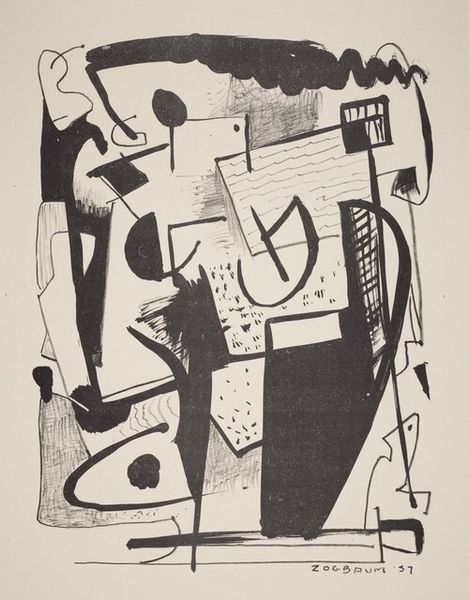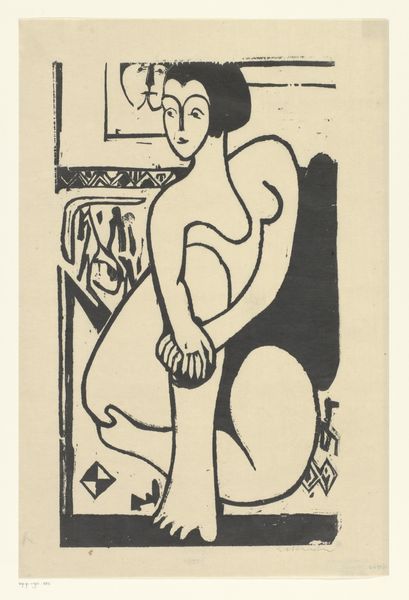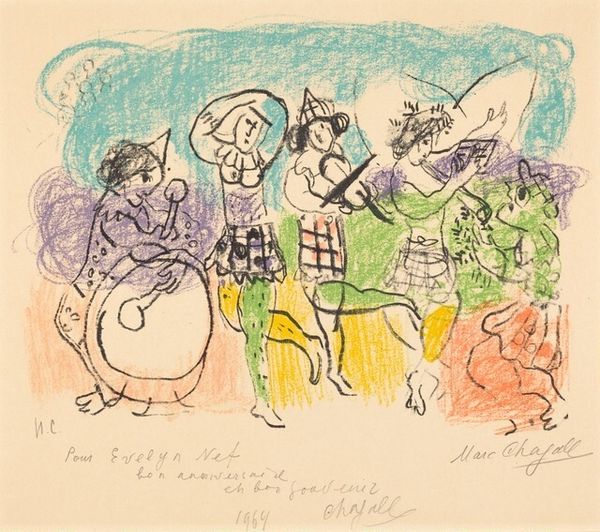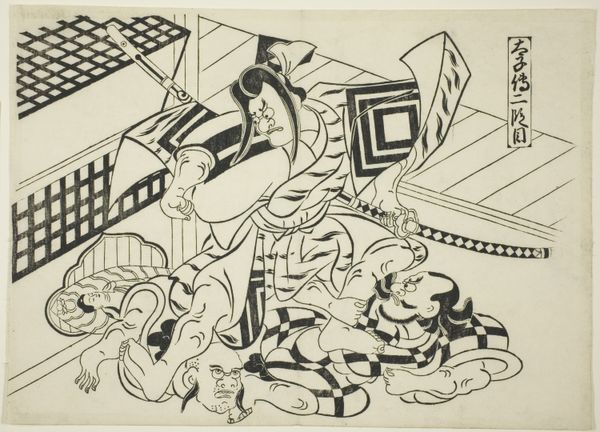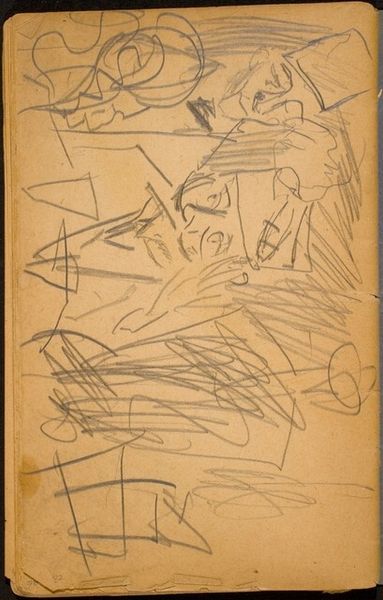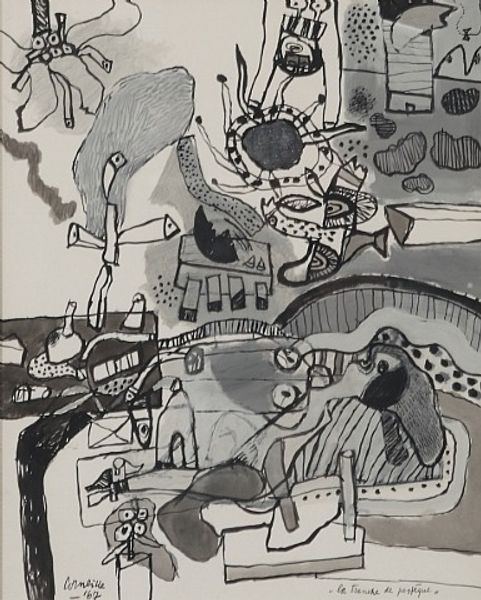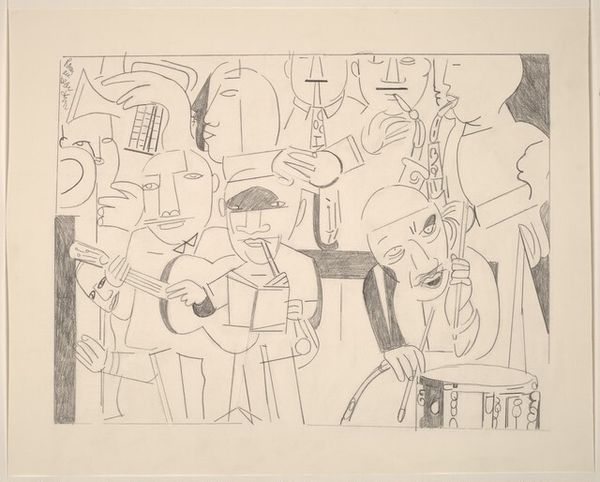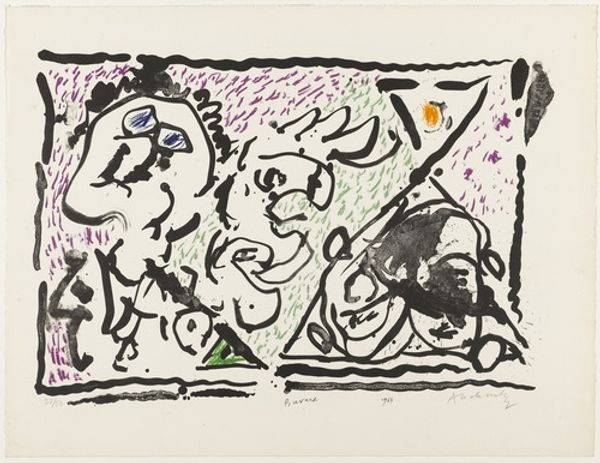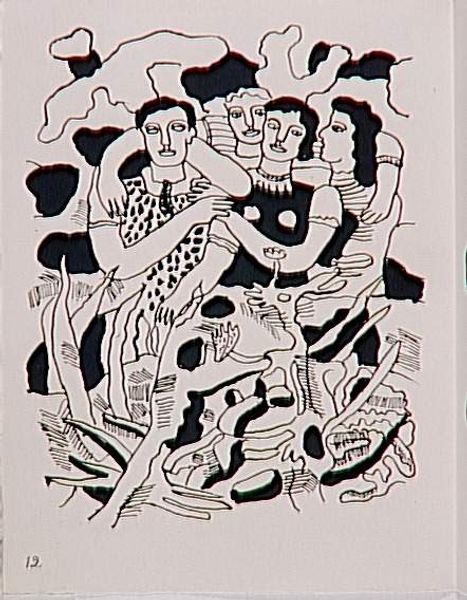
drawing, ink
#
portrait
#
drawing
#
cubism
#
ink drawing
#
figuration
#
ink
#
sketch
#
history-painting
#
modernism
Dimensions: 50 x 32 cm
Copyright: Fernand Leger,Fair Use
Editor: This is Fernand Léger's "Study for the Circus," created in 1949 using ink. The stark contrast between the black and white gives it a dramatic, almost unsettling quality, even though it’s a circus scene. How should we interpret this preliminary drawing within Léger’s larger body of work? Curator: Considering Léger's work within the postwar era is crucial. There was a palpable desire for communal experiences, a rebuilding of society after the devastation. The circus, a form of popular entertainment, served as a potent symbol of collective joy and shared humanity. What do you think about how Léger portrays this 'shared humanity'? Editor: It feels stylized and abstracted. It’s not a realistic representation; the figures are geometric, almost like machines. Is that intentional, a comment on industrial society even in something as joyful as the circus? Curator: Precisely. Léger saw beauty in the machine age. His Cubist-inspired aesthetic elevates the everyday – even a circus – to monumental status. The seemingly simple ink sketch is, in reality, a calculated visual statement about the role of art in a modern, rapidly changing world. It challenges traditional notions of beauty and representation, and brings forth this art to the common man, beyond elites. Does it still ring true today? Editor: Definitely, it challenges assumptions about what art *should* be and who it’s for. Seeing this "Study for the Circus" as a social and cultural statement changes everything. Curator: I think examining it that way adds to the piece, understanding the influence on its creation expands appreciation for it.
Comments
No comments
Be the first to comment and join the conversation on the ultimate creative platform.
